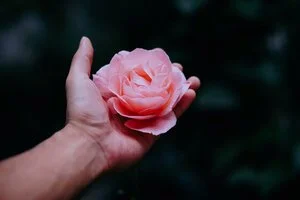
What is Gua Sha?
Gua Sha is a Traditional Chinese Medicine (TCM) healing technique that stimulates the body to heal itself. Gua means “to scrape” and sha means “petechiae” or the red purple color that is produced when a TCM practitioner scapes the skin with a rounded edge tool. From a TCM perspective, the color indicates pathology or unhealthy tissue resulting from lack of free flow of blood, fluids and energy to an area of the body. Whenever there is an obstruction and lack of free flow of these life sustaining components, it results in pain or sickness. From a Western perspective, the red-purple color indicates extravasation of blood from the vessels in the skin.
How Does Gua Sha Work?
When our body tissue is healthy and receiving good blood flow, we should be able to put light pressure on the skin with our Gua Sha tool and our vessels should remain intact with no bleeding. However, when there is an obstruction and lack of free flow of the life sustaining components above, our body tissue becomes unhealthy, vessels are weakened, and this results in “Sha” or the red-purple color beneath the skin.
Gua Sha falls under a theory that no two disease states can simultaneously exist in the body at one time. If the body is not healing or it’s ignoring an ailment, let’s say a chronic cough, and we create small microtrauma in the area of the lungs on the back using a Gua Sha tool, it will not only stimulate the body to heal the microtrauma we created, but also the original issue that existed, the chronic cough. Interesting, huh?
Modern research shows that the small microtrauma that Gua Sha creates produces anti-inflammatory, immune boosting, and tissue regenerative effects that account for the immediate relief that patients feel from pain, stiffness, fever, chill, cough, wheeze, nausea and many other ailments. Since Gua Sha works on a holistic, systemic level, it can be effective at improving acute and chronic internal organ disorders including bronchitis and hepatitis. Overall, Gua Sha is a special TCM healing method that returns flow to that which was previously stagnant in the body.
Does Gua Sha Hurt?
Generally, we pair Gua Sha with the use of an oil on the skin so that it feels like a deep tissue massage. It’s that “hurts so good” feeling when you have a sore muscle and someone is massaging it to help it release.
What is Gua Sha Generally Used For In Practice Today?
Since Gua Sha stimulates a systemic response from the body that leads to anti-inflammatory, immune boosting, and tissue regenerative effects, it can be used for many ailments. However, we use it most in practice to resolve coughs, colds, and bronchitis, decrease musculoskeletal tension and pain, and most recently to enhance facial rejuvenation and skin health.
What is Facial Cosmetic Gua Sha?
Gua Sha has been making a comeback and is appearing everywhere on social media as a new natural anti-aging technique when in fact, it’s existed longer than almost any other cosmetic rejuvenation procedure today. When we use Gua Sha for rejuvenation purposes, we use a bit less pressure than we generally would use on the body so that it results in a nice healthy pink look versus resulting in “Sha'' or a red purple color beneath the skin. It is similar to a facial massage and feels really good.
What does Facial Gua Sha Treat?
The rounded edge tool that we use is generally made from Jade stone and is cool to the skin, which feels refreshing. This helps to promote lymphatic drainage and decrease facial swelling. The massage aspect of Facial Gua Sha decreases muscle tension in the face and jaw that often contributes to wrinkles, jaw pain, and headaches. Finally, Facial Gua Sha increases circulation to the face to promote collagen and elastin production resulting in a tighter, brighter, and more youthful appearance. Your face looks rejuvenated and healthier because it IS healthier from this treatment. It is all authentic.
“Amy at Herb + Ōhm has been tremendous!”
“Amy is a true professional and such a pleasure to work with, as she personalizes each of her services to client’s needs and goals. I came to Herb + Ōhm for preventative skin care. I am 27, but wanted to try SkinPen to help start an anti-aging regimen. I really loved the results I saw with the treatments and I feel like my skin looks smoother, more even and the fine lines have become less noticeable. my experience with Herb + Ōhm was exceptional.”
AM L, Yelp Review




















